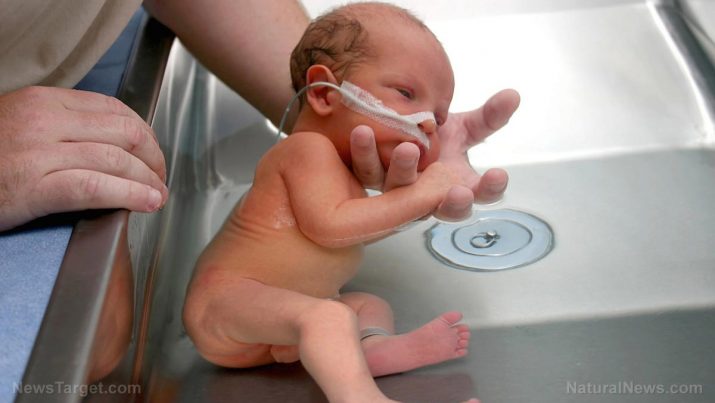
Spina Bifida – causes, side effects and treatments at NaturalPedia.com
Wednesday, June 27, 2018 by Michelle Simmons
http://www.naturalpedia.com/spina-bifida-causes-side-effects-and-treatments-at-naturalpedia-com.html

Spina bifida is a neural tube defect, which is a type of birth defect of the brain, spine, or spinal cord. This occurs when the spinal column of the fetus does not close completely during the first month of pregnancy. As a result, the nerves and spinal cord may be damaged. Although screening tests during pregnancy can check for spina bifida, sometimes it is only known after birth.
The exact cause for it is not known, but genetics and the environment may play a role in its development. Other factors that are believed to contribute to its development include obesity, diabetes, and some medications. There are several types of spina bifida: Occulta, closed neural tube defects, meningocele, and myelomeningocele. In occulta, the mildest form, there may be a small birthmark, dimple, or tuft of hair on the skin where the spinal defect is. In closed neural tube defects, there can be various potential defects in the spinal cord’s fat, bone, or meninges. In meningocele, the spinal cord develops normally, however, the meninges are pushed through the opening in the vertebrae. In myelomeningocele, the most severe form, the spinal cord is exposed, causing partial or complete paralysis of the body below the opening.
Other terms for spina bifida are cleft spine and open spine.

Known signs of spina bifida
The known signs of spina bifida include a weakness or paralysis in the legs, urinary incontinence, bowel incontinence, a lack of sensation in the skin, and a buildup of cerebrospinal fluid, resulting in hydrocephalus and possibly brain damage. The nervous system will also be more prone to infections.
Body systems harmed by spina bifida
The body systems harmed by spina bifida are the nervous system and the skeletal system.
List of foods or nutrients that prevent spina bifida
There is no information on what foods or nutrients exactly prevent spina bifida. However, there are nutrients that help keep the spine healthy. These include calcium, magnesium, vitamin D3, vitamin K2, vitamin C, proteins, vitamin B12, and iron.
Treatments, management plans for spina bifida
Treatments for spina bifida vary depending on the degree the individual is affected with the disease. Some may not need treatment, while others may have to undergo surgery and may need special care.
Where to learn more
- Folic acid supplements can reduce the risk of stroke by 73% in hypertensive patients
- Methanol toxicity from aspartame may cause autism, spina bifida, preterm delivery and more
- Danger: Latex in vaccine packaging, including rubber caps for syringes and vials, an overlooked severe allergy problem for millions of Americans to consider
- Low carb diets like Atkins, Paleo, Keto associated with reduced intake of folic acid, which increases risk of birth defects
- 10 Reasons to Eat More Avocado
Summary
Spina bifida is a neural tube defect that occurs when the spinal column of the fetus does not close completely during the first month of pregnancy.
Spina bifida causes a weakness or paralysis in the legs, urinary incontinence, bowel incontinence, a lack of sensation in the skin, and a buildup of cerebrospinal fluid, resulting in hydrocephalus and possibly brain damage.
Spina bifida treatments include surgery and special care.
Sources include:
Tagged Under: Tags: Spina bifida





